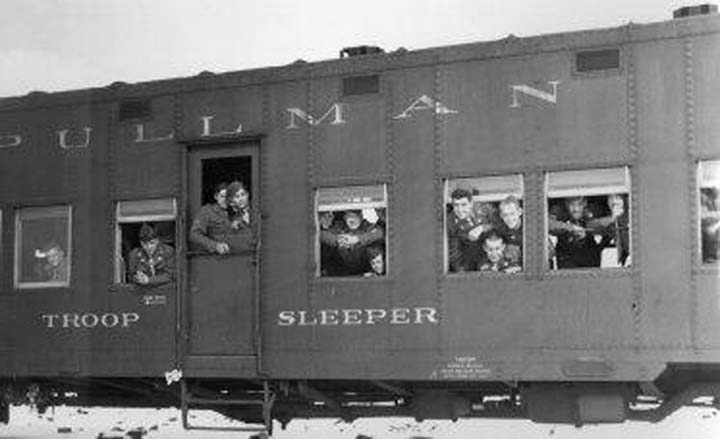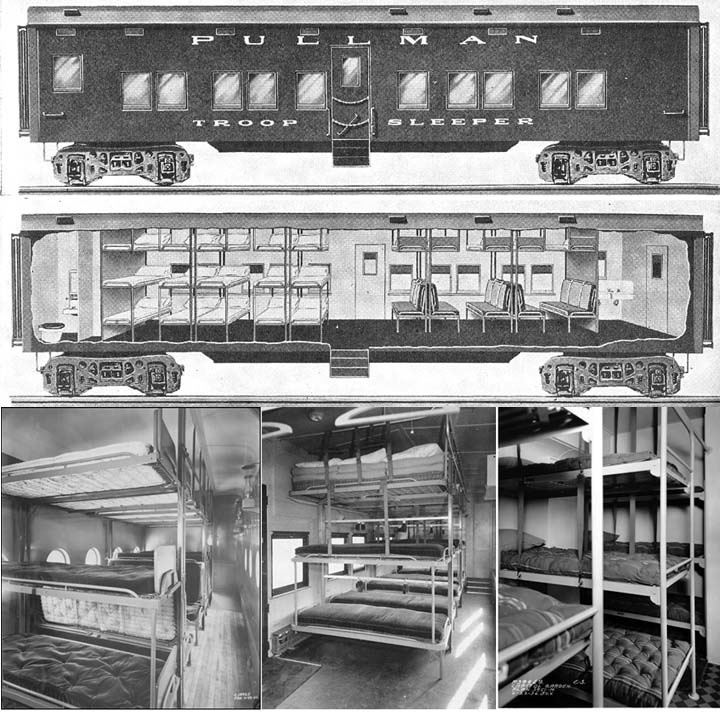
|
|
|
What's IotD? The interesting, amazing, or mind-boggling images of our days. |
|
IotD Stuff |
|
Permalink Latest Image |
|
|
|
Some folks who have noticed IotD
Neatorama |
|
Common image haunts
Astro Pic of the Day |
|
Advertising |
Mar 28th, 2016: Troop trains
During the big one, WW II, bombs, bullets, and big shots moved by air. Men and materiel moved by train, at least until they got on a boat.
Like everything else, there was an intense ramp up in what the military wanted. One of those things was troop trains to move big groups of solders without beating them up too bad. Troop trains were just one of the things to be sucked into the post war scrapping frenzy. Not only the physical trains to supply material for all those refrigerators and cars, much of the records and documentation was destroyed.
But who cares? Model Railroad builders, who are anal about absolute accuracy. digging through any material, photographs, and first hand accounts from vets.
WW II vets are thinning out quickly, and of war stories they remember, troop trains are pretty far down the list.


Troop train, 1944-1947
The very high volume of freight and passenger rail traffic during World War II is a well known fact, as is the fact that existing passenger cars were very highly utilized. To increase the troop movement capacity of the railroads, the U.S. Office of Defense Transportation contracted with Pullman to build 2,400 troop sleepers and with ACF to build 440 troop kitchen cars. Troop trains used a variety of coaches, standard Pullman cars and troop sleepers as were available. Initially, the trains may have stopped at railroad diners for food, had regular diner cars, or employed baggage cars as temporary kitchens. Food eaten on the train was served to troops at their seats or in their bunks. A train with troop sleepers for enlisted men, full size Pullmans for the officers, and kitchen cars for food service was an ideal consist for efficiency and cost.

Troop train, 1942-1947
The railroads and the Pullman Company met the high demands for troop movements during World War II by pressing every sleeping car possible into service. Troop trains used the variety of coaches and Pullman cars that were available. Soldiers in standard Pullman section or tourist berths usually slept two in a lower berth and one in the upper. They were luckier than the soldiers in coaches and in the bunks in troop sleepers.
Pullman constructed the first troop sleeper cars in late 1943 to help ease the burden on the standard Pullman fleet.
Baggage cars were converted into temporary kitchen cars before ACF could complete its order for troop kitchen cars. One or two kitchen cars were surrounded by troop cars in the consist because the troops were served in their seats or bunks.
Troop trains followed no fixed consist: railroads assembled whatever types of sleepers they could get to accommodate the troop movement.
During the war, most sleeping cars were heavyweight cars and still owned by the Pullman Company. Cars were mostly Pullman green with “Pullman” on the letterboards, but other colors could be mixed in the train. For troop trains before late 1943, use conventional 85’ Pullman cars instead of the troop sleeper cars.
Now we have aircraft that swallow two companies with gear, and travel too fast to worry about comfort.
link
glatt Monday Mar 28 08:25 AM
I was on a train in Europe some time ago, and had to use the toilet. I lifted the lid, and saw the ground rushing past in the drain below. The damn thing was just a funnel onto the tracks.
I see this Pullman sleeper uses the same technology. There was no sign in mine, but I guess the unwritten rule is that you don't use it in the train station.
Carruthers Monday Mar 28 09:56 AM
|
I was on a train in Europe some time ago, and had to use the toilet. I lifted the lid, and saw the ground rushing past in the drain below. The damn thing was just a funnel onto the tracks.
I see this Pullman sleeper uses the same technology. There was no sign in mine, but I guess the unwritten rule is that you don't use it in the train station. |
That was the system in use on trains in the UK many years ago, but at least the designers were considerate enough to include an 'S' bend in the plumbing so the sensitive user was spared the off putting sight of the ground speeding past at 60mph.
Each installation was accompanied by a sign asking the user to 'Please refrain from flushing the WC while the train is standing in a station'.
This, of course, was a target for graffiti artists. It is said that one such sign had the words 'Except at Aldershot' penned in underneath.
In the days of compulsory military service (pre 1961) the garrison town of Aldershot was the first experience many conscripts had of military life. It was not universally popular.
Strahd Ivarius Monday Mar 28 05:10 PM
Typical American over-engineering... ;-)
In Europe, for troop transport, we needed only covered wagons, able to transport 40 men or 8 horses.
Much more efficient!
|
Your reply here?
The Cellar Image of the Day is just a section of a larger web community: a bunch of interesting folks talking about everything. Add your two cents to IotD by joining the Cellar. |
